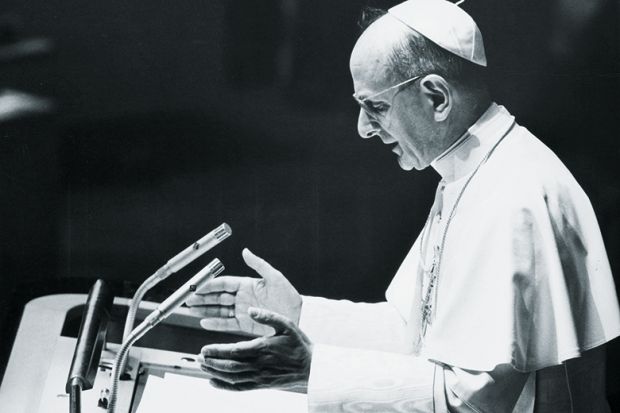Despite its long involvement in global affairs, the role of the Holy See is under-explored. (This, rather than “the Vatican”, is the correct term when talking about the Catholic Church’s engagement on the international stage.) Thus, Stummvoll’s work is a welcome addition to the literature. He uses Catholic Social Doctrine (CSD), the church’s framework for engaging in social, economic and political questions, to explore how Holy See diplomacy operated in four cases: the Vietnam War, the closing days of Communism in Poland, the UN population conferences in the 1990s and the international debt-relief campaign leading up to Jubilee 2000 .
He correctly rejects a crude simplification of Holy See foreign policy. Stummvoll dismisses the supposed anti-Communist Cold War “Holy Alliance” with the United States as simplifying a complex and nuanced opposition to Communism. He points out that some on the political left support the Holy See’s stances on the environment and poverty while making no mention of its position on abortion and sexual morality. Equally, he argues that CSD should not be treated as synonymous with a conservative ideology focused on sexual morality to the detriment of issues such as poverty and debt. Stummvoll’s choice of case studies consciously reflects CSD’s interconnected nature, with extensive multilingual archival work used to support his argument.
His understanding of CSD is rooted in an orthodox, holistic Catholicism. This gives the reader an appreciation of the complexity of Holy See diplomacy. For example, CSD is only firm and precise on gay marriage and abortion while accepting of different views on, for example, political and economic questions. When speaking out, Stummvoll argues, Holy See diplomacy is confined by obligations to political neutrality and the theological constraints of being non-dogmatic on issues where Catholics can disagree.
In the case of the UN population conferences, he applies CSD to explain how the Holy See pragmatically joined the consensus on greater rights for women but strongly opposed any advancement of abortion. Although disagreements with Western governments are addressed, he does not explore broader Holy See tensions with the UN during these conferences over its promotion of the right to abortion.
The author’s knowledge of, and care for, CSD means that he examines the Holy See through its own lenses. This can sometimes lead to an acceptance of its stances, theology and actions where he could, and should, be more critical of the tension between the world as the Church would wish it to be and the world as it is. He notes Paul VI’s vague stance for peace in his 1965 UN speech during the Vietnam War. He could have said more about the contradictions between its limited room for manoeuvre and the Holy See’s use of “moral pressure” during the conflict.
In conclusion, then, while he paints an accurate picture of the complexity of Holy See diplomacy from its own perspective, Stummvoll does not address questions about its capacity to be a moral actor, given the limitations on its capacity for action.
Luke Cahill is a teaching fellow in politics at the University of Bath. His doctorate examines the Holy See’s use of soft power on the US before the 1991 and 2003 Iraq Wars.
A Living Tradition: Catholic Social Doctrine and Holy See Diplomacy
By A. Alexander Stummvoll
Cascade Books
230pp, £37.00 and £20.00
ISBN 9781532605130 and 9781532605116
Published 17 April 2018
Register to continue
Why register?
- Registration is free and only takes a moment
- Once registered, you can read 3 articles a month
- Sign up for our newsletter
Subscribe
Or subscribe for unlimited access to:
- Unlimited access to news, views, insights & reviews
- Digital editions
- Digital access to THE’s university and college rankings analysis
Already registered or a current subscriber?







